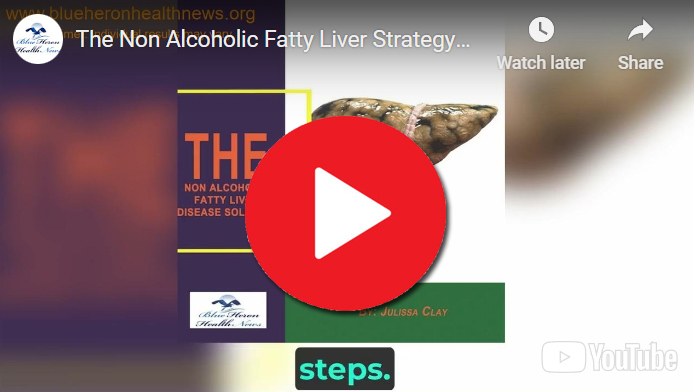
The Non Alcoholic Fatty Liver Strategy™ By Julissa Clay the program discussed in the eBook, Non Alcoholic Fatty Liver Strategy, has been designed to improve the health of your liver just by eliminating the factors and reversing the effects caused by your fatty liver. It has been made an easy-to-follow program by breaking it up into lists of recipes and stepwise instructions. Everyone can use this clinically proven program without any risk. You can claim your money back within 60 days if its results are not appealing to you.
What is the role of FibroScan in assessing liver health?
FibroScan is a non-invasive imaging technology used to assess liver health by measuring liver stiffness and fat content. It plays a crucial role in diagnosing and monitoring liver diseases, particularly those related to fibrosis (scarring) and fatty liver conditions. Here’s a detailed look at the role of FibroScan in assessing liver health:
1. How FibroScan Works
- Liver Stiffness Measurement (LSM): FibroScan uses transient elastography to measure the stiffness of liver tissue. It emits a small, painless pulse of energy that travels through the liver, and the device measures the speed at which the wave passes through the liver tissue. Stiffer liver tissue, often due to fibrosis or scarring, will transmit the wave faster.
- Controlled Attenuation Parameter (CAP): In addition to liver stiffness, FibroScan can measure the liver’s fat content using the Controlled Attenuation Parameter (CAP). CAP measures the attenuation of ultrasound waves as they pass through the liver tissue, which correlates with the amount of fat present.
2. Role in Diagnosing Liver Fibrosis and Cirrhosis
- Fibrosis Staging: One of the primary uses of FibroScan is to assess the stage of liver fibrosis, which is the buildup of scar tissue in the liver due to chronic liver damage. FibroScan provides a quantitative measure of liver stiffness, which can be used to stage fibrosis from mild (F0-F1) to severe (F3-F4). Severe fibrosis (F4) indicates cirrhosis, which is the advanced stage of liver disease.
- Cirrhosis Detection: FibroScan is highly effective in identifying cirrhosis, a condition where the liver is severely scarred and its function is impaired. Detecting cirrhosis early is crucial for managing the condition and preventing complications such as liver failure or liver cancer.
3. Assessment of Fatty Liver Disease
- Non-Alcoholic Fatty Liver Disease (NAFLD): FibroScan is valuable in assessing and monitoring NAFLD, a condition where fat accumulates in the liver, often associated with obesity, diabetes, and metabolic syndrome. CAP scores provide a non-invasive way to quantify liver fat content, helping to diagnose and monitor the progression of NAFLD.
- Non-Alcoholic Steatohepatitis (NASH): NASH is a more severe form of NAFLD that involves inflammation and can lead to fibrosis. FibroScan can help distinguish between simple steatosis (fat accumulation) and NASH by assessing both fat content and liver stiffness.
4. Monitoring Disease Progression
- Tracking Fibrosis and Fat Content: For patients with chronic liver diseases such as hepatitis B, hepatitis C, or NAFLD, FibroScan is used to monitor changes in liver stiffness and fat content over time. This allows healthcare providers to track disease progression or regression, especially in response to treatment.
- Guiding Treatment Decisions: The results from FibroScan can influence treatment decisions, such as the need for antiviral therapy in hepatitis, lifestyle modifications in NAFLD, or the timing of interventions for cirrhosis. It helps in identifying patients who may benefit from more aggressive treatment or closer monitoring.
5. Non-Invasive Alternative to Liver Biopsy
- Reduced Need for Biopsy: Traditionally, liver biopsy was the gold standard for assessing liver fibrosis and steatosis. However, biopsy is invasive, carries risks, and may be associated with sampling errors. FibroScan offers a non-invasive alternative, reducing the need for liver biopsies in many patients.
- Repeat Assessments: Because FibroScan is non-invasive and safe, it can be repeated regularly to monitor liver health without the risks associated with repeated biopsies. This is particularly useful for patients requiring long-term follow-up.
6. Advantages of FibroScan
- Quick and Painless: A FibroScan procedure typically takes only a few minutes and is painless. It is performed in an outpatient setting without the need for sedation or recovery time.
- Wide Applicability: FibroScan is suitable for a broad range of patients, including those with viral hepatitis, alcoholic liver disease, NAFLD/NASH, and other chronic liver conditions.
- Standardization and Reproducibility: FibroScan provides standardized, reproducible results that can be compared over time or across different healthcare settings.
7. Limitations
- Accuracy in Certain Conditions: While FibroScan is highly effective, it may be less accurate in certain populations, such as patients with severe obesity or ascites (fluid in the abdomen), which can interfere with the measurements.
- Interpretation of Results: FibroScan results must be interpreted in the context of the patient’s overall clinical picture. It is a valuable tool, but not definitive on its own; other tests and clinical assessments may be needed to confirm a diagnosis.
Conclusion
FibroScan is a powerful tool for assessing liver health, particularly in diagnosing and monitoring liver fibrosis, cirrhosis, and fatty liver disease. Its non-invasive nature, combined with its ability to provide immediate results, makes it an essential component of modern liver disease management. By offering a safer, more convenient alternative to liver biopsy, FibroScan plays a crucial role in the early detection and ongoing management of chronic liver conditions.

The Non Alcoholic Fatty Liver Strategy™ By Julissa Clay the program discussed in the eBook, Non Alcoholic Fatty Liver Strategy, has been designed to improve the health of your liver just by eliminating the factors and reversing the effects caused by your fatty liver. It has been made an easy-to-follow program by breaking it up into lists of recipes and stepwise instructions. Everyone can use this clinically proven program without any risk. You can claim your money back within 60 days if its results are not appealing to you.